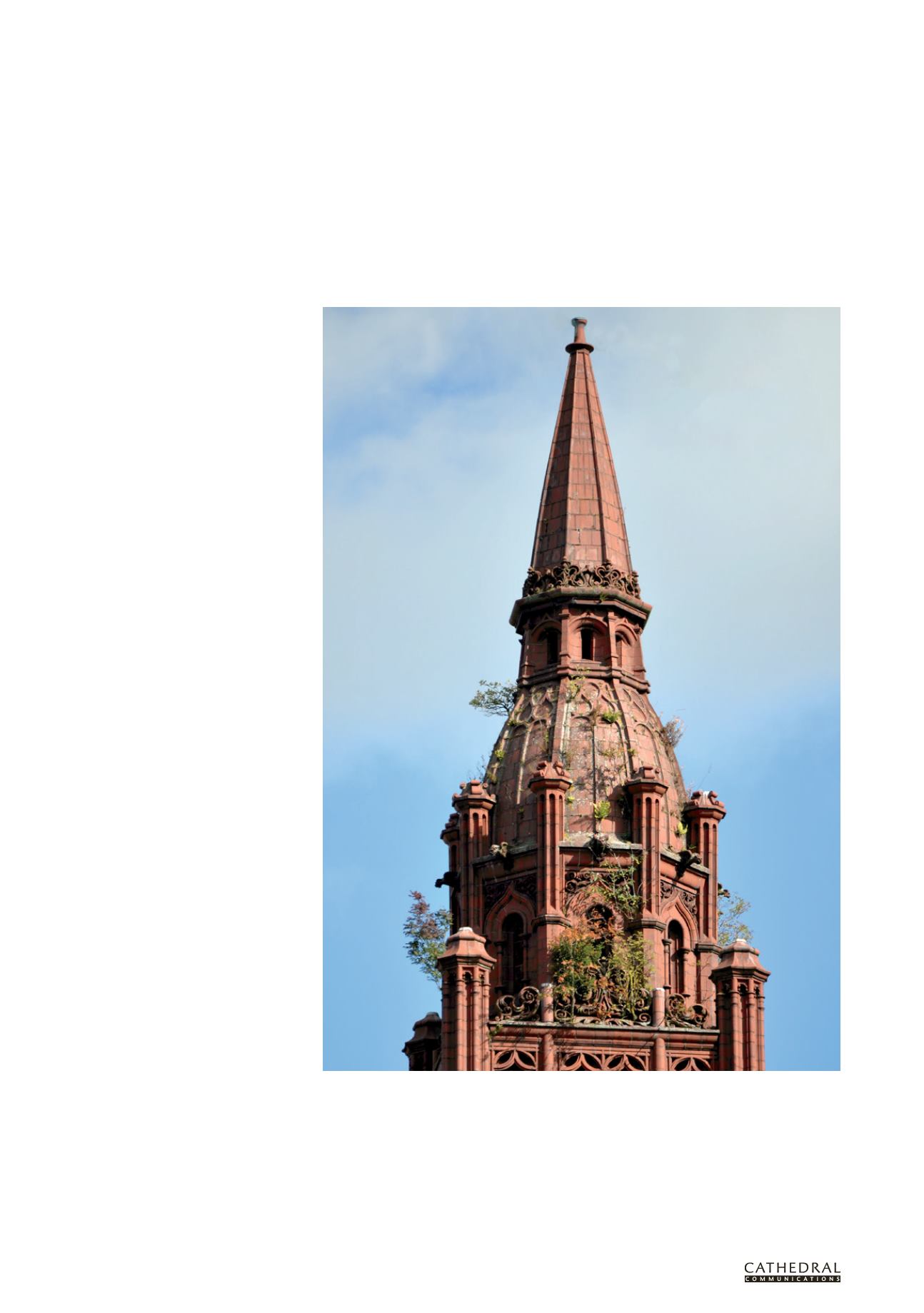

1 3 6
T H E B U I L D I N G C O N S E R VAT I O N D I R E C T O R Y 2 0 1 6
T W E N T Y T H I R D E D I T I O N
SERV I CES & TREATMENT :
PROTEC T I ON & REMED I AL TREATMENT
4.1
LIME MORTARS FOR
HIGH EXPOSURE LEVELS
CLARE TORNEY
P
RIOR TO
the patenting of Portland
cement in 1824 and its subsequent
wide-scale adoption, lime was
usually the material of choice in masonry
construction due to its availability, versatility
and compatibility with other components.
Before widespread transport of materials
was established, and where neither lime nor
Portland cement were available locally, earth
or clay mortars might be used. Although
the availability of raw materials was initially
the main driver in the popularity of lime
mortars in historic times, their compatibility
with natural stone played a key role in their
longevity, both in relation to their widespread
use and their physical durability. Following a
rise in the popularity of Portland cement in
the 20th century, recent decades have seen
a decline in its use for conservation works
due to its incompatibility with traditionally
constructed stone, brick and terracotta
masonry, and a resurgence in the use of lime
mortars in this context.
It is the micro-structure of lime
mortars that promotes their compatibility
with traditional masonry. Mass masonry
construction relies on ‘moisture management’
– the unconstrained movement of moisture,
through a building or structure, to maintain
a level of moisture equilibrium that promotes
building ‘health’. The principal components
of all lime mortars – lime binder, aggregate
and water – and the reactions and interactions
that occur during their production, mixing
and curing, typically result in the formation of
a relatively open-textured material.
The voids or pores in the mortar are
interconnected through cracks in the binder
(in other words, the mortar is microporous).
These pathways allow the mortar to transmit
fluid, a property termed permeability. Because
these pathways also allow the transmission
of water vapour such materials are often
said to be ‘breathable’. High permeability
or breathability is perhaps one of the
most important properties in dictating
compatibility between materials, and is one of
the primary factors in the incompatibility of
highly cementitious mortars with traditional
masonry. Cement mortars and other low
permeability materials, such as resin-based
mortars, are high-density binders that lack
microporosity, resulting in trapped moisture
(see Robyn Pender’s article on permeable
building materials, page 37).
Stone deterioration is often the first
visual indicator of the incompatibility
between traditional masonry and cement-
Buddleia and other plants exploiting the failure of high level mortar joints in the terracotta tower of Central
Hall, Birmingham
rich mortars. The over-exposure of the
stone to moisture resulting from use of a
low permeability mortar can cause many
forms of deterioration including granular
disintegration, delamination and blistering.
As moisture penetrates a building, this may
lead to concentration of salts in the stone,
corrosion of metal supports, rotting of timbers
and deterioration of internal surfaces and
finishes through penetrating damp.
These problems can be avoided through
an understanding of building design and
















